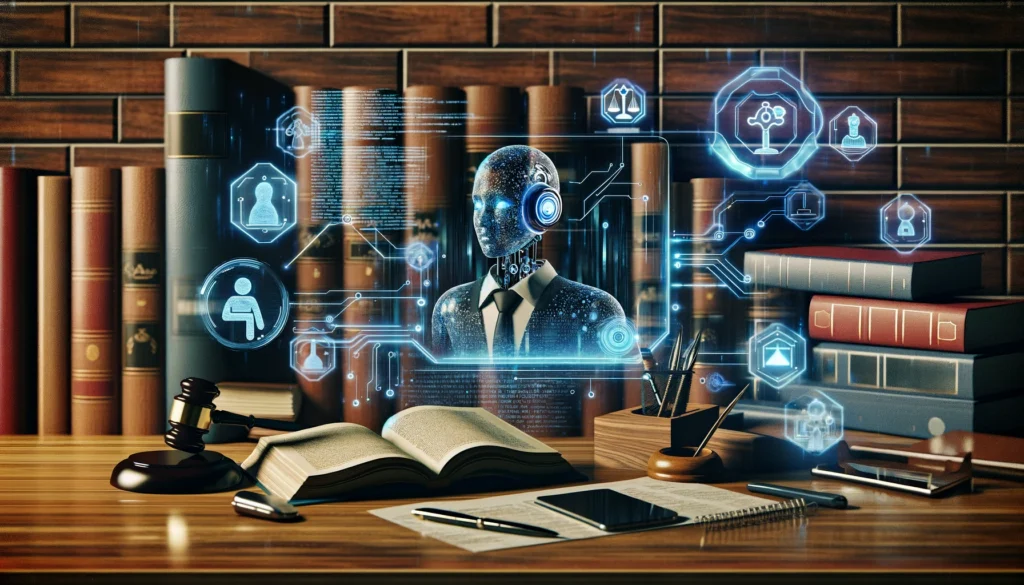
The Relevance of AI in Estate Planning
In the domain of estate planning, traditional methods often entail rigorous manual drafting, review, and consultation sessions. While effective, these methods can be time-intensive and susceptible to human error. Enter ChatGPT and other Large Language Models (LLMs), which offer a powerful alternative. By leveraging the capabilities of AI, legal professionals can seamlessly integrate technology into their workflows.
ChatGPT, a large language model, excels in natural language processing, enabling it to draft preliminary documents that paralegals and lawyers can easily refine. This technological infusion not only accelerates the drafting process but also ensures a higher level of consistency and accuracy across various documents. Moreover, integrating AI into legal workflows can significantly alleviate the workload for legal professionals, allowing them to focus more on strategic tasks and client interactions.
Setting the Stage: Pre-Writing Preparations
Before diving into AI-supported letter drafting, meticulous preparation is paramount. A robust understanding of the client’s needs and the estate planning context is essential for effective output.
Gathering Essential Client Information: Begin by gathering comprehensive details about the client, including their personal information, assets, beneficiaries, and specific wishes. This foundational data will be crucial in tailoring the letter of intent.
Understanding the Specifics of Estate Planning: Knowledge of the client’s unique estate planning requirements, such as trusts, guardianships, or charitable bequests, will inform the structure and content of the letter.
Structuring the Initial Outline: Draft a preliminary outline that includes:
- Introduction: Identification of the involved parties and the purpose of the letter.
- Body: Detailed expression of the client’s intentions regarding asset distribution.
- Conclusion: Summarization and any additional instructions or personal notes from the client.
Preparing an outline ensures that the AI-generated content remains focused and relevant.
Also read:
Prompt Engineering: Crafting the Perfect Query
To harness the full potential of ChatGPT, crafting well-defined prompts is essential. Effective prompts guide the AI to produce accurate and contextually relevant content.
Basics of Effective Prompt Crafting: An effective prompt is clear, concise, and provides enough context for the AI to understand the task. It typically includes specific instructions, examples, and key details.
Examples of Nuanced Prompts for Estate Planning Contexts:
- Simple Prompt: “Draft a letter of intent for a client wishing to allocate their estate to multiple beneficiaries.”
- Detailed Prompt: “Create a letter of intent for John Doe, who wishes to distribute his estate among his three children, with specific bequests to his favorite charities. Include guardianship instructions for his minor children.”
Techniques for Refining and Iterating Prompts: Begin with a broad prompt and refine it based on the AI’s initial output. For instance, if the draft is too generic, specify additional details or use examples from previous documents to guide the AI.
Balancing Specificity and Flexibility: While it’s crucial to provide specific details, leaving some room for AI interpretation can yield creative and comprehensive drafts. Aim for a balance where the AI has enough context but can also contribute its own structured insights.
Also read:
Customizing Outputs: Ensuring Accuracy and Personalization
Once ChatGPT generates the initial draft, human oversight is crucial to ensure accuracy and personalization.
Reviewing and Editing AI-Generated Content: Carefully review the AI’s output against the initial client information. Look for any discrepancies or areas that need further detail.
Adding Human Touch: Personalization is key in estate planning documents. Insert specific client phrases, personal notes, or any unique instructions that reflect the client’s voice and intentions. This not only enhances the letter’s authenticity but also strengthens client rapport.
Spotting and Correcting Common AI Errors: AI-generated drafts might have redundant phrases or subtle inaccuracies. Common errors could be incorrect names, misinterpretation of legal terms, or inadequate contextual relevance. Vigilantly proofreading the document and making necessary amendments is essential to ensure compliance and accuracy.
Also read:
Enhancing Collaboration and Efficiency
Utilizing AI in estate planning not only improves the drafting process but also enhances collaboration and operational efficiency for legal teams.
Streamlining Client Communications: AI can generate initial drafts of client communications, which paralegals can then customize. This streamlines the process and ensures that communication remains prompt and clear.
Collaborative Tools and Shared Document Editing: Employ collaborative tools such as shared documents or platforms like Google Workspace or Microsoft 365. These tools facilitate real-time editing and seamless collaboration between legal team members, ensuring that the final output is polished and accurate.
Time-Saving Techniques: For time-strapped paralegals, leveraging templates and AI for initial drafts saves substantial time. This allows for more focus on detailed review and client interaction, enhancing overall productivity.
Also read:
Finalizing and Polishing the Letter of Intent
The final steps involve meticulous proofreading and ensuring legal compliance.
Proofreading Strategies: Implement multiple rounds of proofreading. Engage different team members to review the document, ensuring that it is error-free and coherent.
Legal Reviewing for Compliance and Accuracy: Scrutinize the letter for compliance with legal standards and accuracy. This review should confirm that the document aligns with legal statutes and the client’s wishes.
Best Practices for Final Touches and Delivery: Add a professional touch to the document, ensure proper formatting and present it in a polished manner. When delivering the letter, include a cover note that highlights key points and reassures the client of the document’s thoroughness.
Future Trends: The Role of AI in Legal Professions
The integration of AI in the legal field is poised to expand. Emerging technologies promise further efficiencies and innovations in estate planning and beyond. Keeping abreast of these developments will be vital for legal professionals.
Also read:
Conclusion: Embracing Innovation in Legal Work
The strategic integration of AI, such as ChatGPT, in estate planning heralds a new era of efficiency and precision. Embracing this technology can enhance productivity and client satisfaction. Legal professionals are encouraged to adapt and leverage these innovations for a competitive advantage.
Also read:
Additional Resources and Tools
For further enhancement of your practice, consider utilizing:
- Legal software like Clio and PracticePanther for workflow management.
- Online resources such as tutorials and webinars on AI in legal tech.
These tools can complement your use of AI, providing a holistic approach to modern legal practice.


